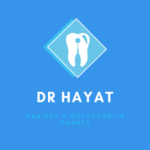Most malocclusions are mainly hereditary or genetic in origin. This explains why similar problems are often encountered among members of the same family. Examples of problems of genetic origin are lack or excess space between teeth, excess or missing teeth and imbalances between the shape and size of the jaws.
Other factors that can contribute to the development of malocclusions are acquired causes, such as : chronic finger sucking habits that can exert force for a long enough period of time to move teeth ; airway obstruction problems causing chronic oral respiration. This can affect jaw development and tooth position ; Poor tongue position at rest or during swallowing ; Premature loss of primary or permanent teeth due to an accident, cavities or gum and bone diseases supporting the teeth. The loss of teeth can cause the displacement of other teeth and contribute to the development of malocclusions ; A trauma, accident or blow to the face that could cause tooth movements.

